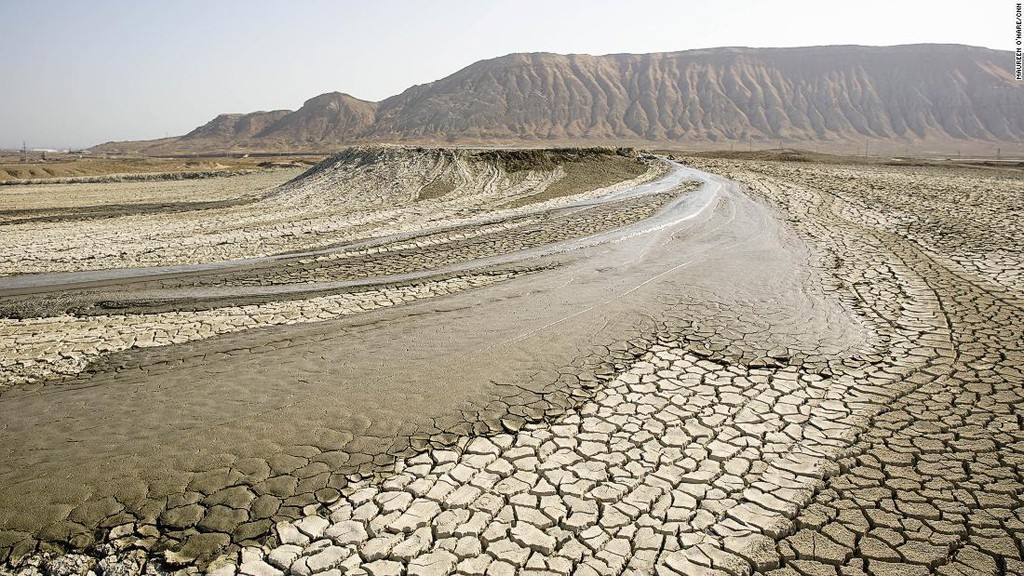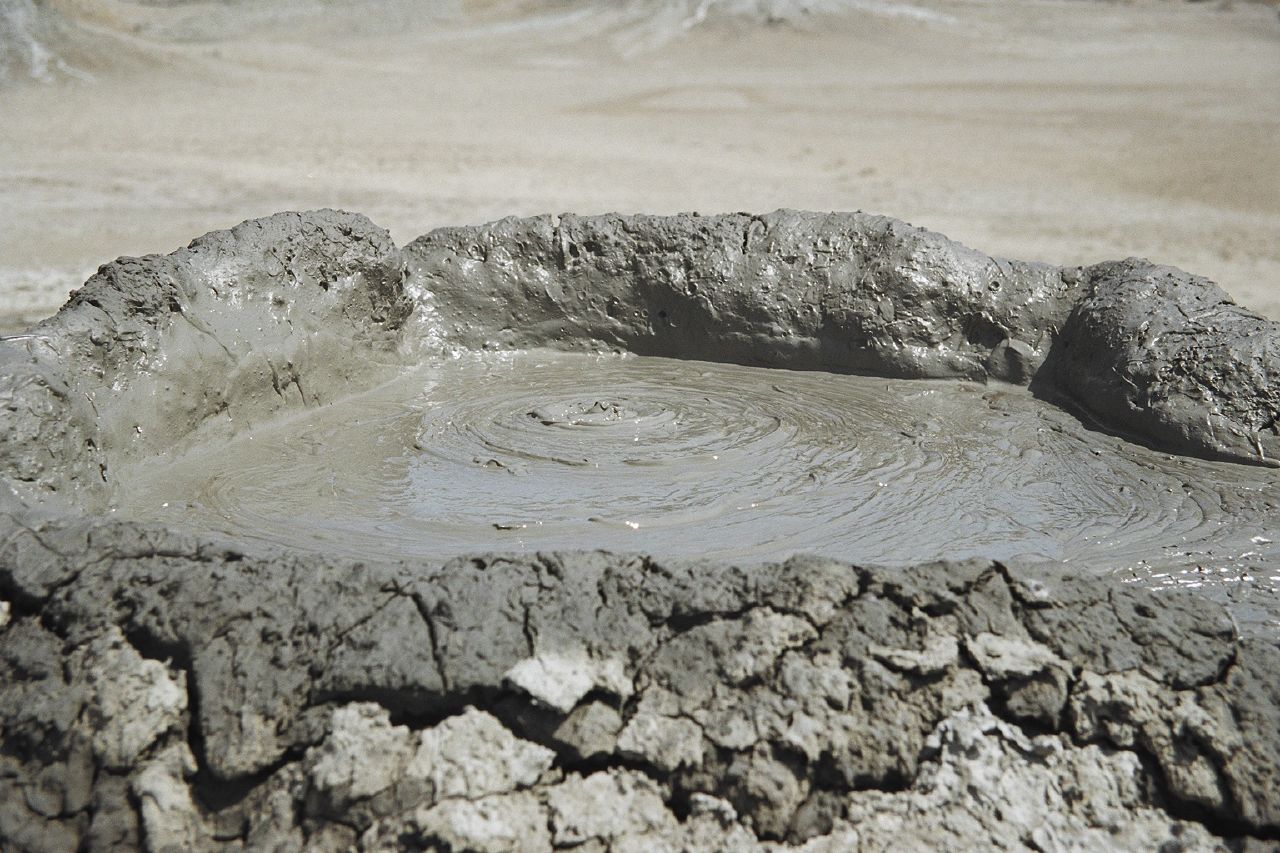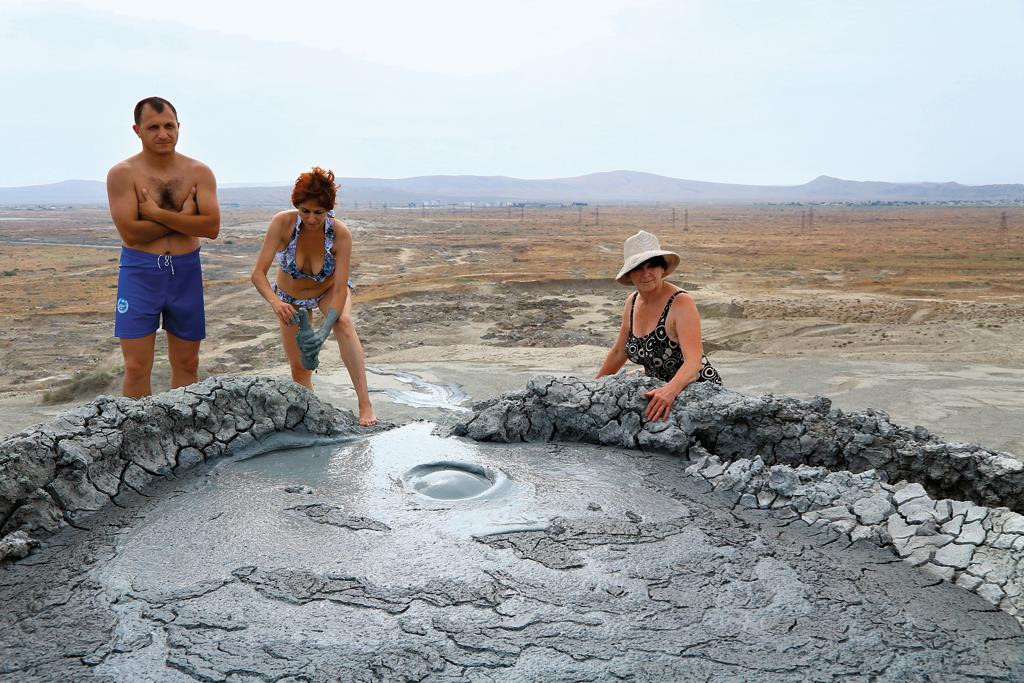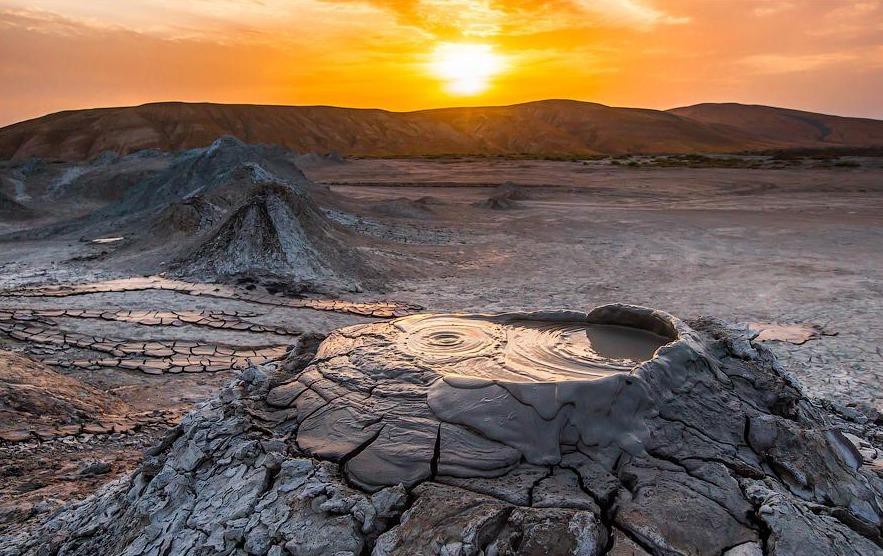Azerbaijan has the most mud volcanoes of any country, spread broadly across the country. 350 of the 800 volcanoes of the world are in the Azerbaijani Republic. Local people call them “yanardagh” (burning mountain), “pilpila” (terrace), “gaynacha” (boiling water) and “bozdag” (grey mountain) alongside its geographical name – mud volcanoes.

Underground and submarine mud volcanoes are also famed in Azerbaijan. There are more than 140 submarine volcanoes in the Caspian Sea. Eight islands in the Baku Archipelago are mud volcanoes by origination. The other kind of mud volcanoes are wells.
Their activity can be observed among strata of various ages. According to the information, mud volcanoes initially began their activity in the territory of Azerbaijan 25 million years ago.

About 200 eruptions have occurred in 50 volcanoes in the territory of Azerbaijani Republic since 1810. Eruption of mud volcanoes is accompanied by strong explosions and underground rumbling.
Gasses come out from the deepest layers of the earth and immediately ignite. A height of a flame over volcano reaches 1000 meters (Garasu volcano). Toragay volcano erupted 6 times from 1841 to 1950.

Mud volcanoes are associated with oilfields. Rich oil and gas fields are found in the territories of mud volcanoes (Lokbatan, Garadgh, Neft Dashlari, Mishovdagh and others). In addition, lava, mud and liquid erupted by mud volcanoes are used as raw materials in chemical and construction industries and also in pharmacology.

In 2007, the State Natural reserves were created by the decree of the President. Natural reserve covers Baku and Absheron peninsula. Illegal actions there which include construction works, pollution, and destruction are prohibited.
Main volcanoes according to ANAS are located near Caspian Sea coast and reach up to 400.0 m (1,312.3 ft). 52 volcanoes got under state protection.

Mud volcanoes appeared on the territory of the present Azerbaijan Republic 25 million years ago. Near mud volcanoes, deposits of oil and gas can be found. Mud volcano's components can be used as raw materials for the chemical and construction industries, as well as for pharmacology.
According to en.wikipedia











